ARIZONA – Tuzigoot and Jerome
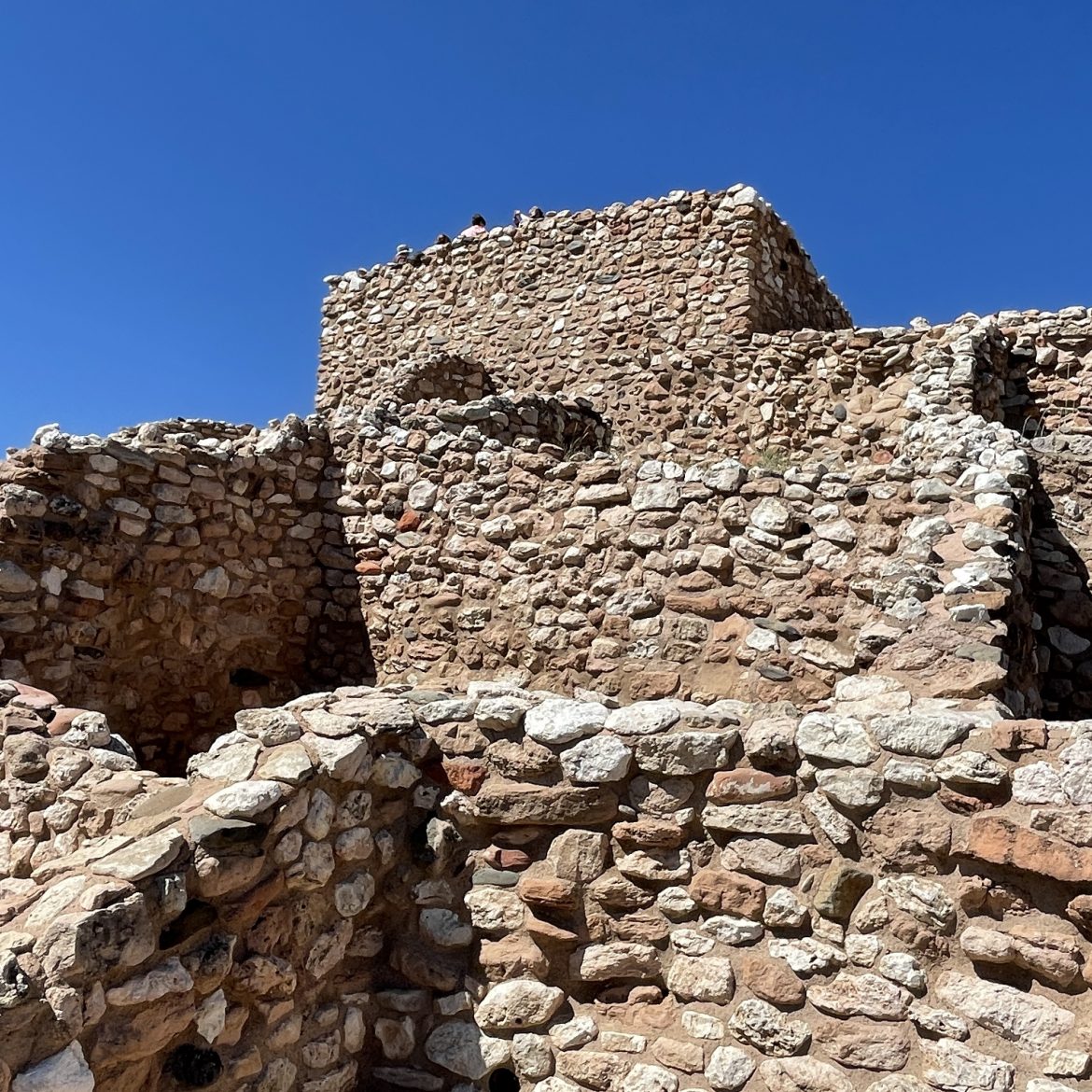
Who can resist visiting a National Park Service Monument with the curious name of Tuzigoot? The word means Crooked Water in the Apache language but it preserves remains from peoples who arrived around the year 1000 AD to take advantage of water resources to grow corn, beans, squash to supplement their diet of deer and other game. And they also grew and wove cotton for garments and trade—the prized Pima cotton label we now look for on clothing and bedding labels. Tuzigoot, the remnant of a Southern Sinaqua village dating between 1000 and 1400 AD, spreads over a hill 120 feet above the Verde Valley, well-named for the verdant farms and ranches below. In keeping with water-related names, Sinaqua means without water in Spanish although these ancient peoples were experts at irrigation.
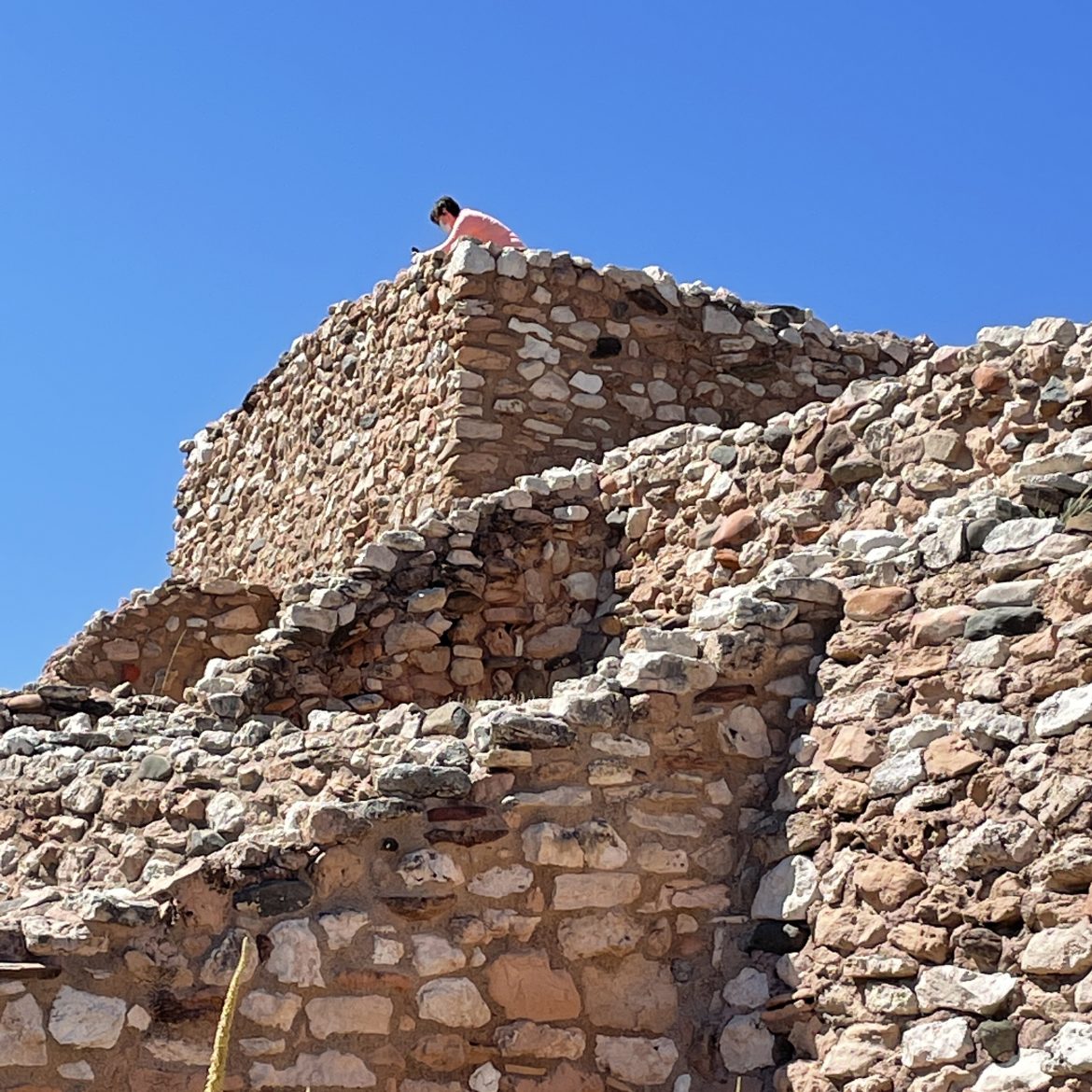
Originally a settlement of two stories, some of the remaining cobblestones look unsteady and rough even though walls have has mostly stood for the 600 years since it was abandoned to tiny lizards, small yellow butterflies fluttering around scrubby plants, and tourists. That abandonment, so characteristic of ruins in the desert Southwest, is a great mystery. Some say drought, some say changes in spiritual practices, and some say overpopulation and resource depletion caused migration to other places, maybe a change of trade routes, or a return to the hunter-gatherer way of life of their earlier ancestors.
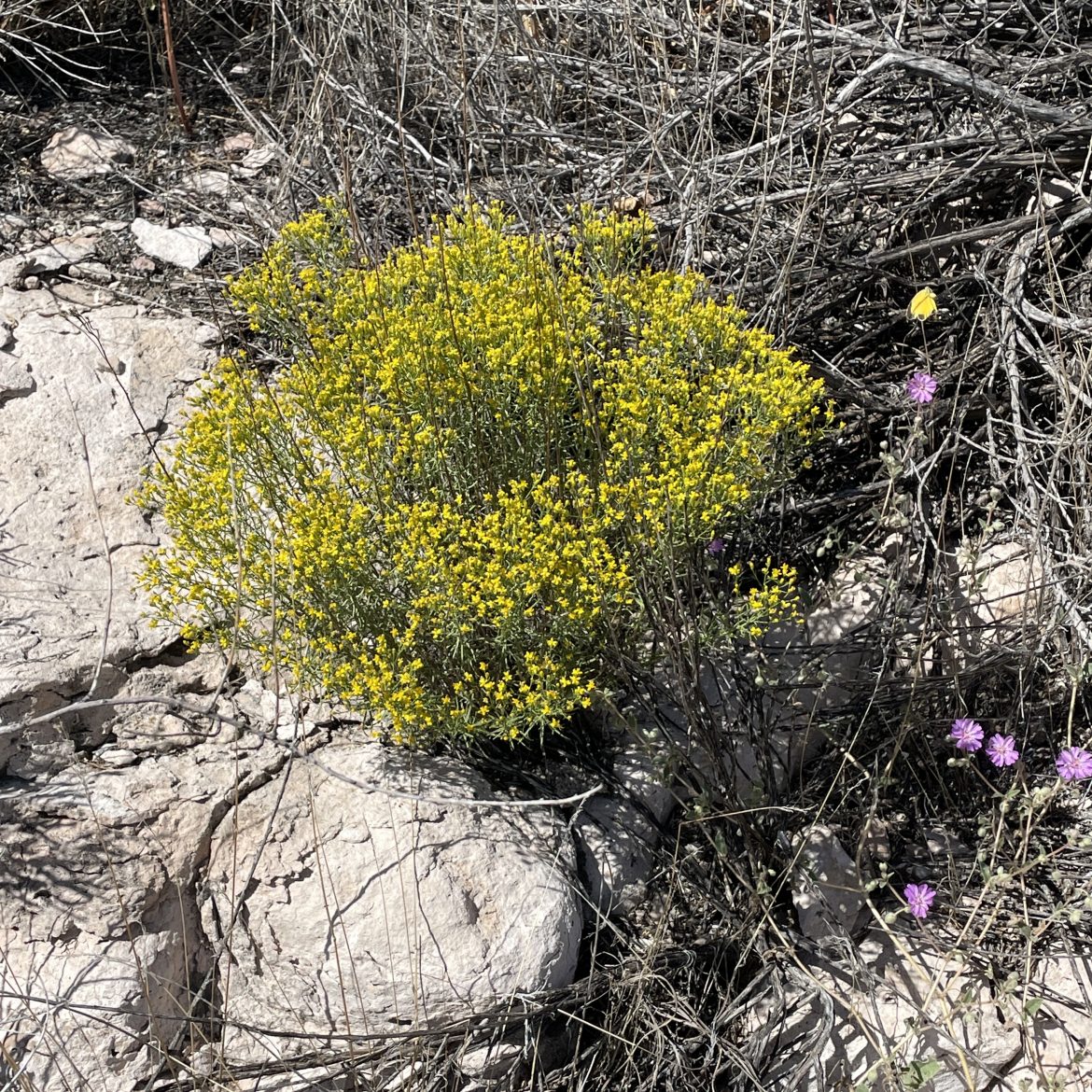
We moved on to a livelier remnant of the past: Jerome, an old copper-mining town now devoted to a museum of mining, and great barbecue.
Jerome takes one’s breath away – literally. Sedona is at 4350 feet; Jerome’s altitude is 5066 but the twisting road to the ghost town tops out at 7000 gasping feet. Not being a mountain climber, I had a slight moment of altitude sickness which soon passed off but I wouldn’t recommend a visit for anyone with lung issues.
There is a scattering of homes and old shops along with a few hotels and a great barbecue restaurant: Bobby DS. We watched the BBQ master testing the chickens cooking while we waited for our lunch. My ribs (on the plate not me) were accompanied by cactus fruit lemonade.
For a time, Jerome hosted the largest copper mine in the Arizona Territory, the United Verde founded in 1883. Of course, the town built an opera house to mark its importance.
The big attraction is the Jerome State Historic Park centered around an enormous adobe house, the 1916 Douglas Mansion, now a museum about the family the history of copper mining in the area. Near the entrance is a large hunk of stone laced with gorgeous malachite and azurite signaling copper is to be found.
Ore wagons along with drills and other equipment dot the park.

In 1912 Douglas developed the Little Daisy Mine. We walked around the Audrey Shaft (part of the Daisy along with Edith – not sure I’d relish a mine shaft named after me although it probably made her rich).
Audrey plunges 1900 feet down to the copper-bearing rock, some 600 feet below water level requiring pump to remove water and bring in air – the very thought was terrifying. I walked around the industrial ruins trying to imagine standing in the tiny elevator to be lowered so deep in the earth for the start of my shift.
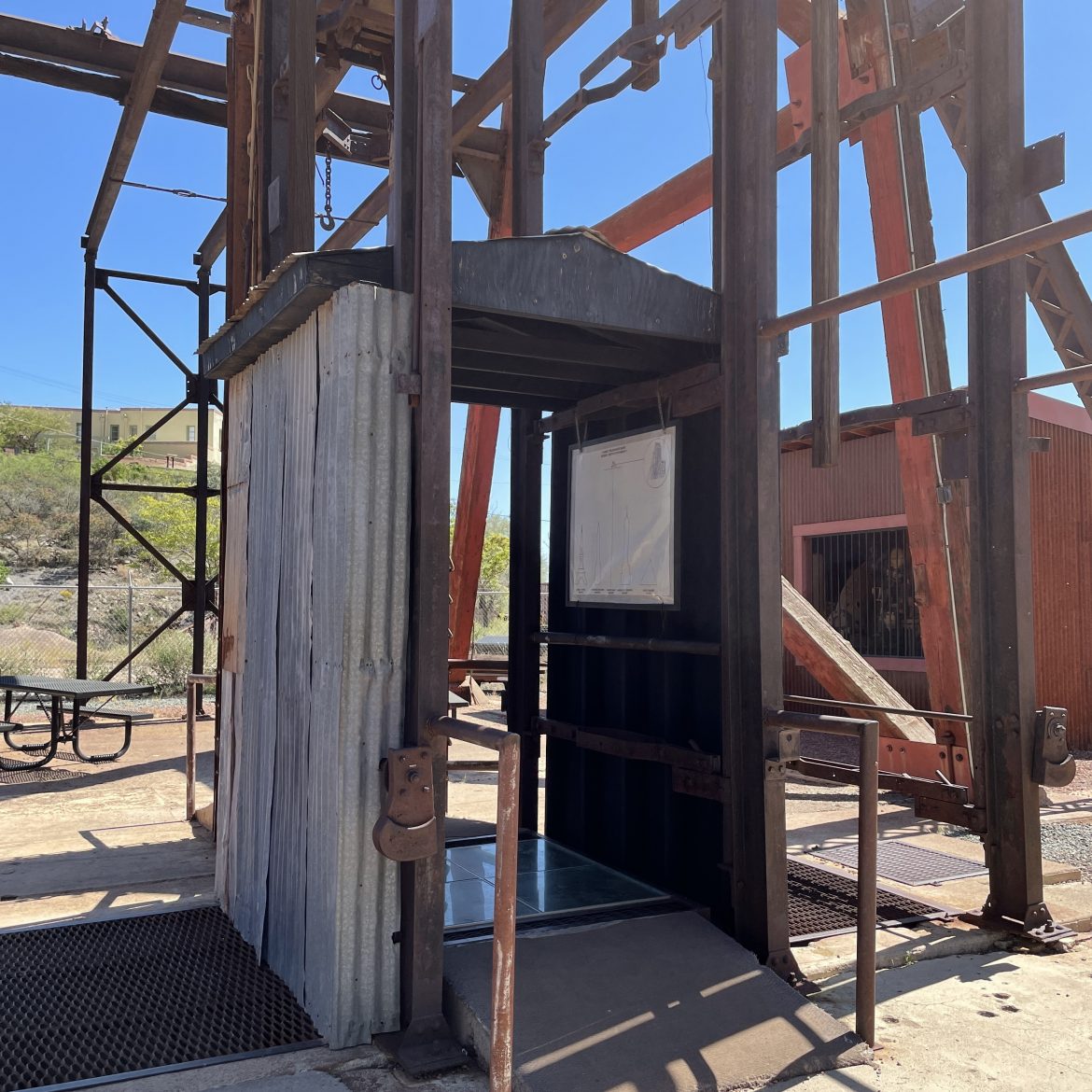
The bonanza ended in 1953 when magnates left due to loss of profits. But what happened to the miners?
One thing for sure: Everything passes with time.
Copyright Judith Works
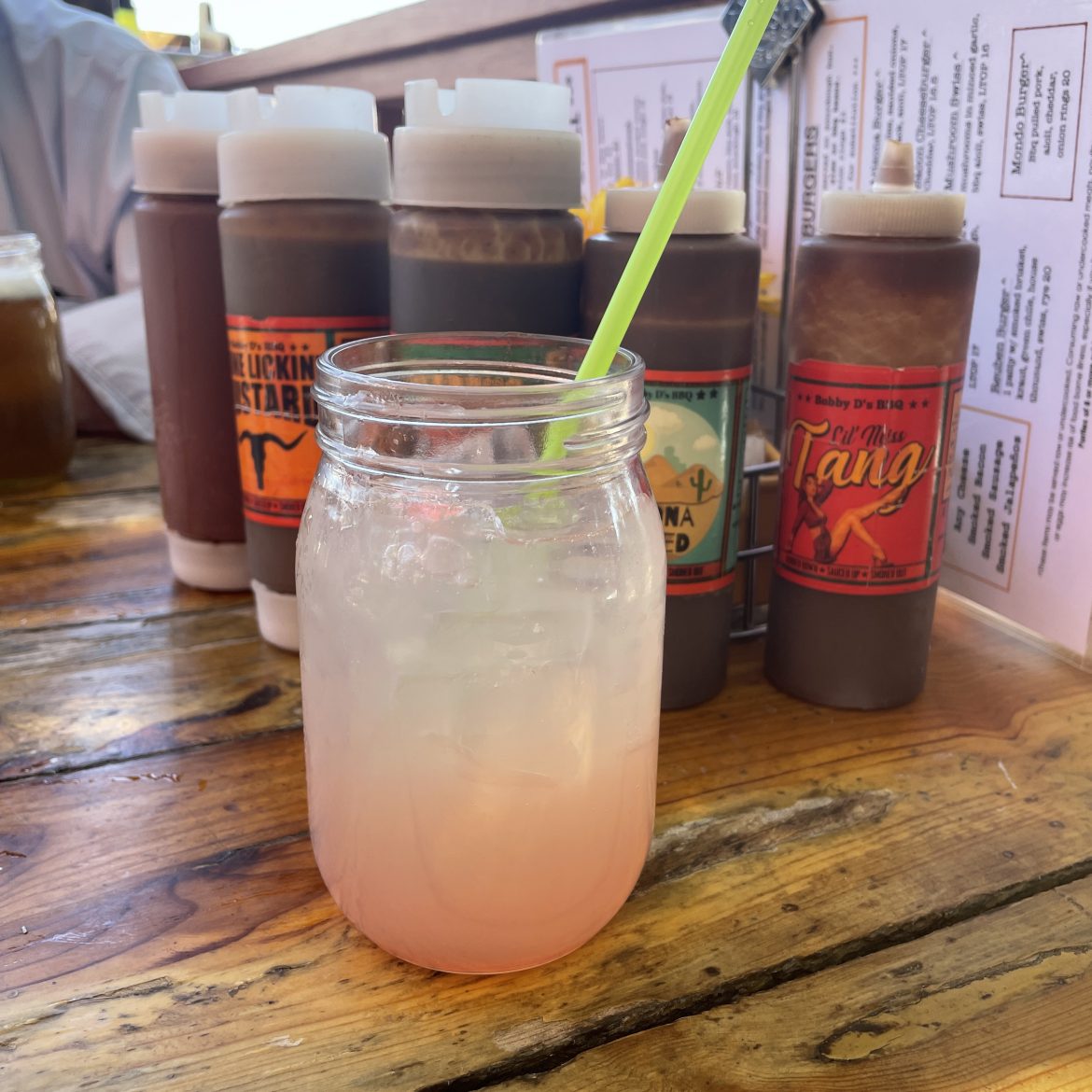
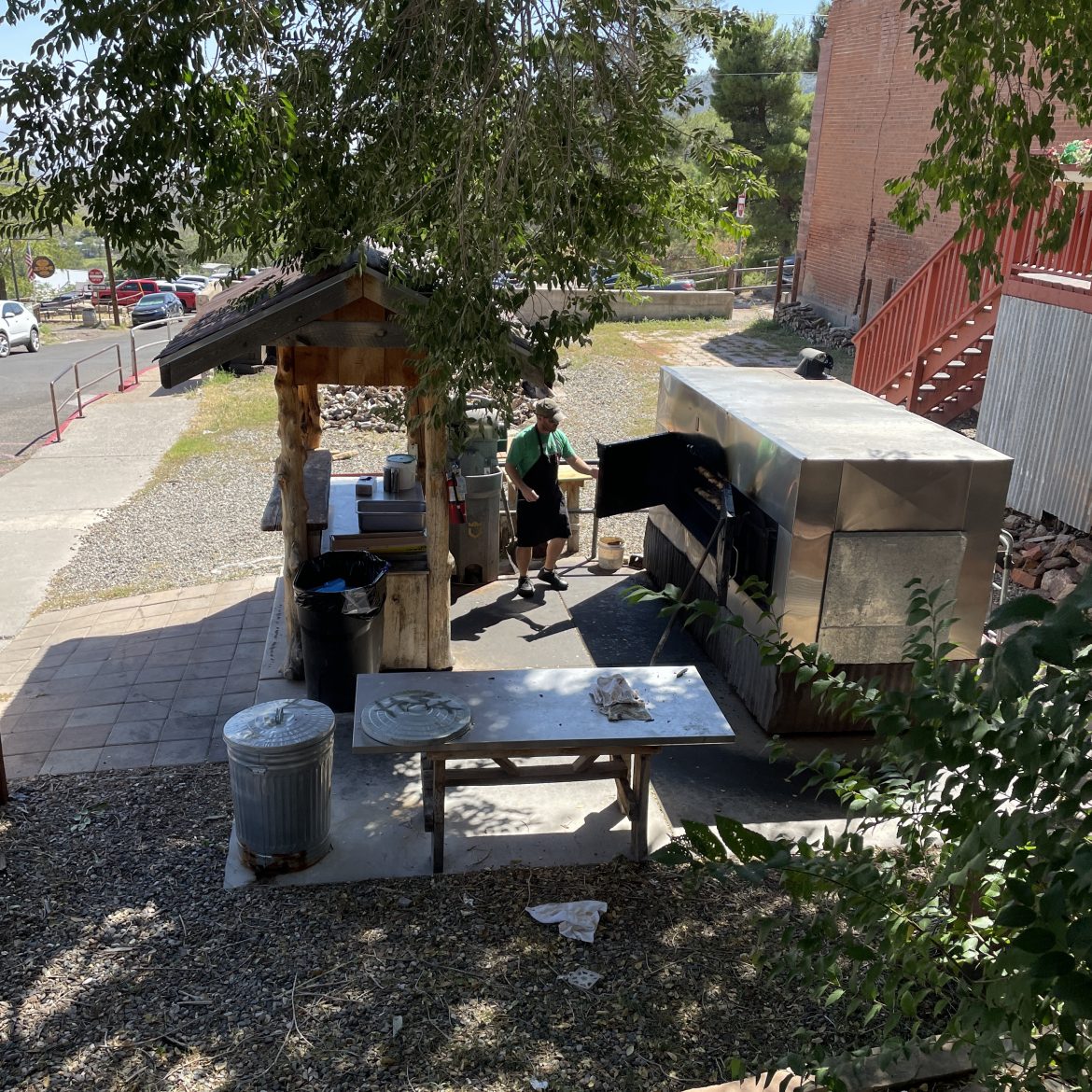
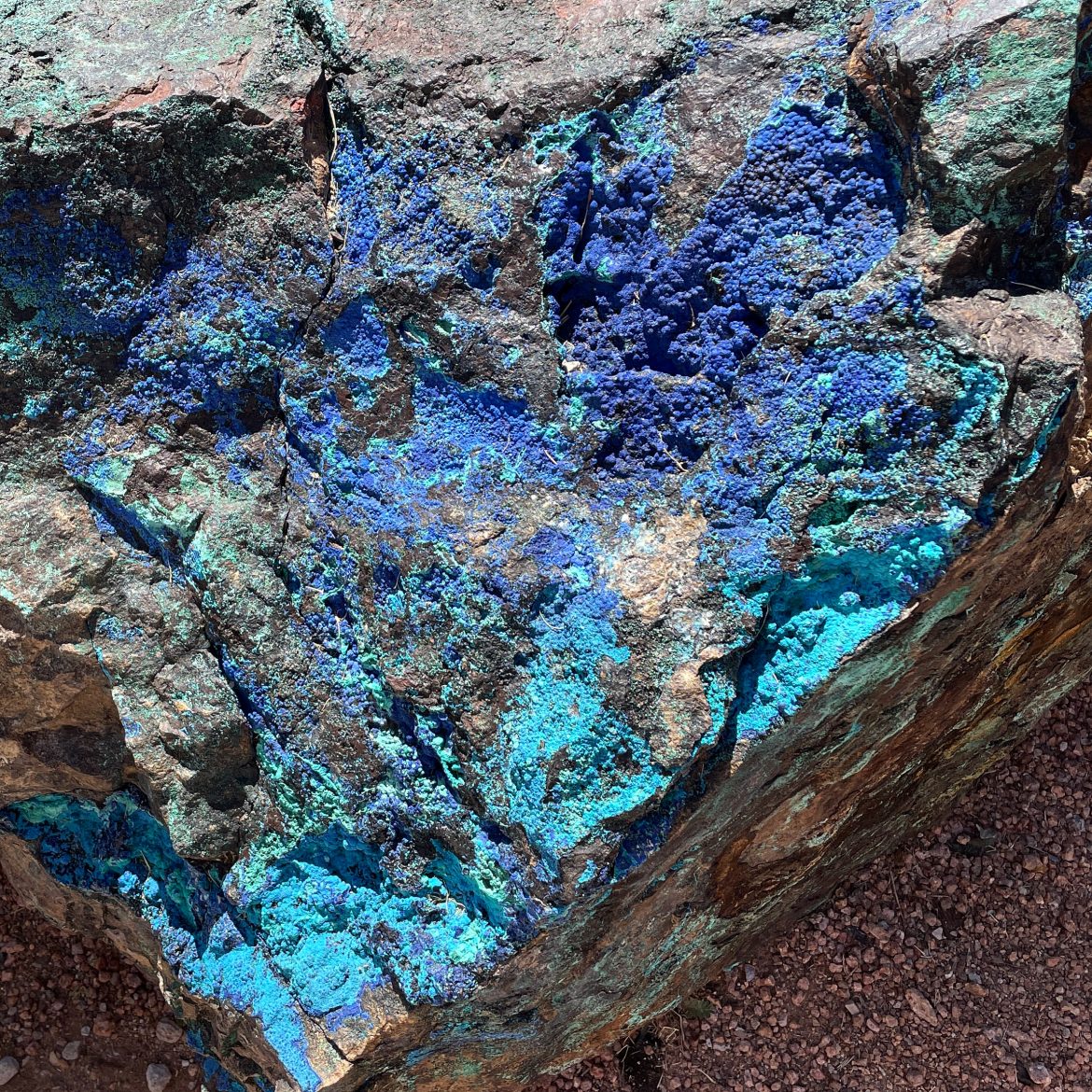

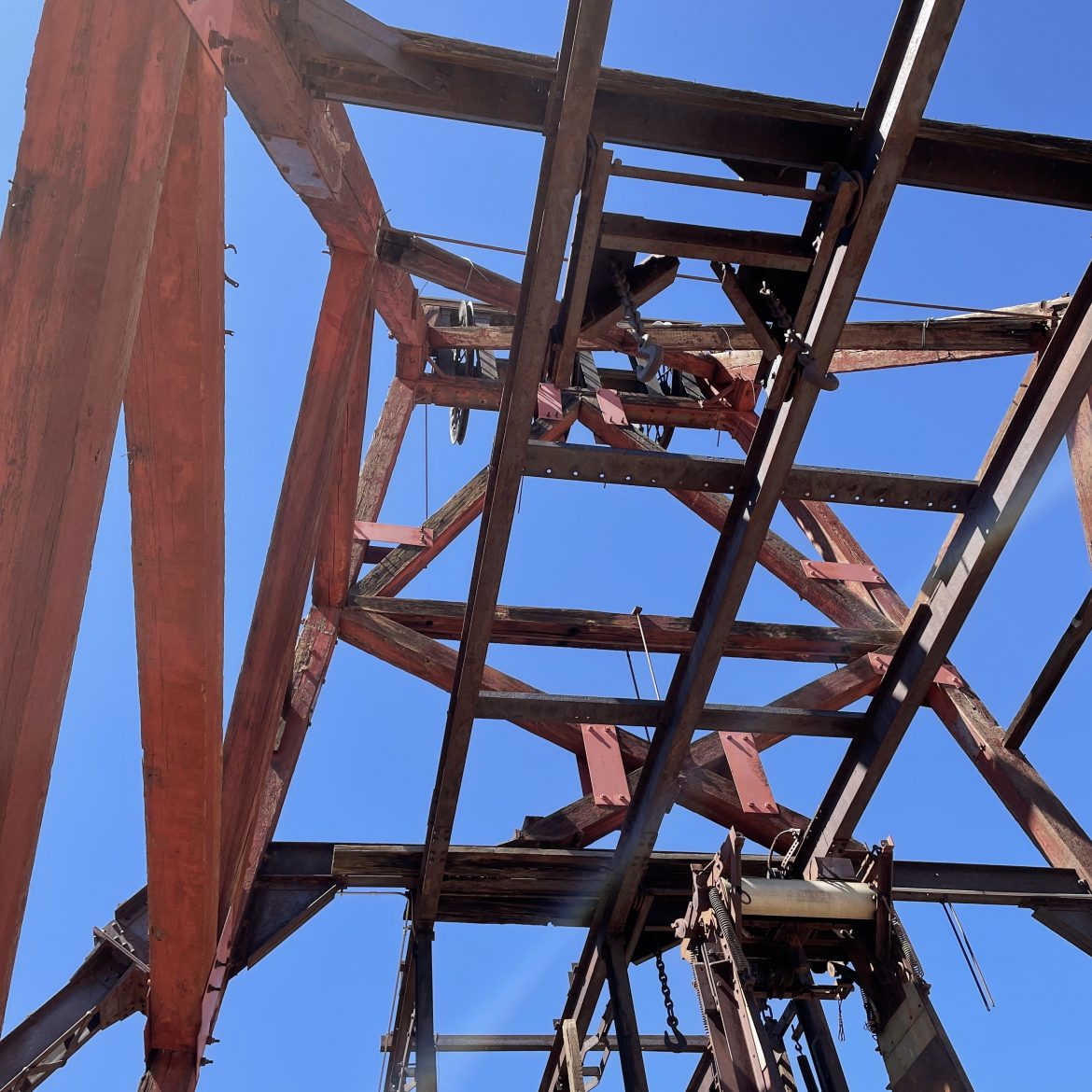
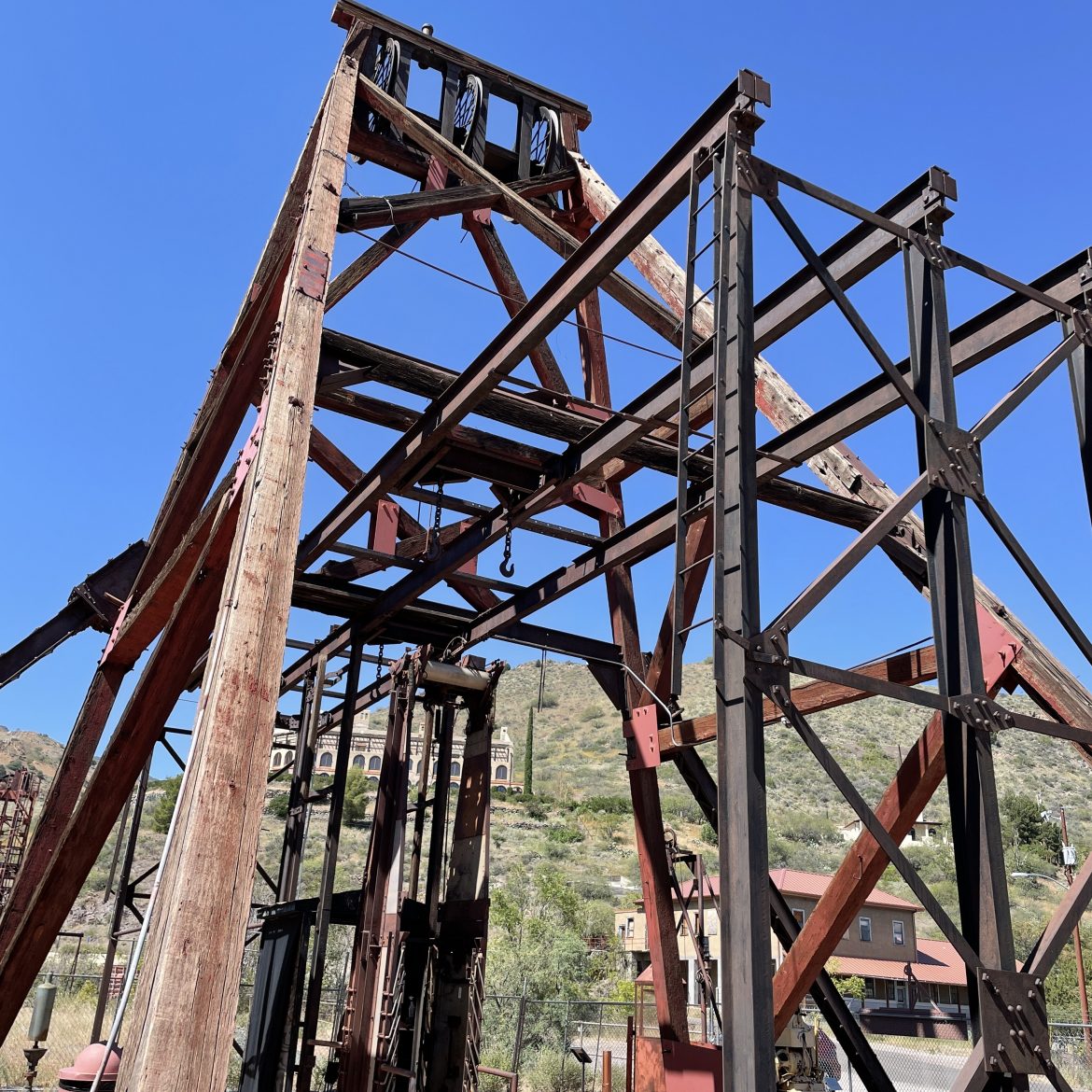
Behind the Story
I think it’s natural to feel that everything around us will always continue on. But ruins and ghost towns and abandoned mines do give us food for thought.
The malachite and azurite are so pretty!